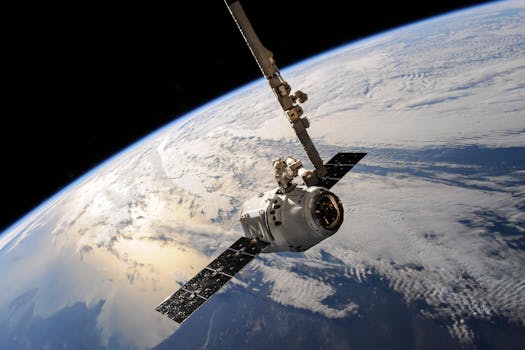Future of Satellites: Revolutionizing Global Connectivity with WordPress

The future of satellites is Future of Satellites, and it’s an exciting time for the space industry. With the increasing demand for global connectivity, satellites are playing a vital role in providing internet access to remote and underserved areas. The integration of WordPress, a popular content management system, is also transforming the way we manage and maintain satellite-related websites and applications.
One of the significant trends in the satellite industry is the launch of small satellites, also known as CubeSats. These miniaturized satellites are relatively inexpensive and can be built and launched quickly, making them an attractive option for companies and organizations looking to establish a presence in space. With the help of WordPress, these satellites can be easily managed and monitored, allowing for real-time data analysis and communication.
Another area where satellites are making a significant impact is in the field of navigation. Global Navigation Satellite Systems (GNSS) such as GPS, GLONASS, and Galileo are providing location information to billions of users around the world. The accuracy and reliability of these systems are crucial for various applications, including aviation, maritime, and land transportation. WordPress is being used to develop customized navigation systems and applications, making it easier for users to access and utilize GNSS data.
The Role of Satellites in Earth Observation
Satellites are also playing a vital role in Earth observation, providing valuable data and insights on our planet’s climate, weather patterns, and natural resources. With the help of satellite imagery, scientists and researchers can monitor deforestation, track ocean currents, and predict weather patterns. WordPress is being used to develop interactive and user-friendly platforms for Earth observation data, making it easier for researchers and scientists to analyze and share their findings.
The use of satellites in Earth observation is not limited to scientific research. Satellites are also being used for commercial applications, such as crop monitoring, disaster response, and urban planning. With the integration of WordPress, these applications can be easily customized and integrated with other systems, making it easier for users to access and utilize satellite data.
The Future of Satellite Technology
The future of satellite technology is exciting and promising. With advancements in materials science, propulsion systems, and communication technologies, satellites are becoming more efficient, reliable, and cost-effective. The development of reusable launch vehicles, such as SpaceX’s Falcon 9, is also reducing the cost of accessing space, making it easier for companies and organizations to launch their own satellites.
WordPress is playing a significant role in the development of satellite technology, providing a platform for developers and engineers to build and manage satellite-related applications and websites. With the help of WordPress, satellite operators can easily manage their fleets, monitor their performance, and provide real-time data to their customers.
Conclusion
In conclusion, the future of satellites is revolutionizing global connectivity, navigation, and Earth observation. With the integration of WordPress, satellites are becoming more efficient, reliable, and cost-effective. As the demand for global connectivity continues to grow, satellites will play an increasingly important role in providing internet access to remote and underserved areas.
The use of WordPress in the satellite industry is also transforming the way we manage and maintain satellite-related websites and applications. With its flexibility, customization, and user-friendly interface, WordPress is providing a platform for developers and engineers to build and manage complex satellite systems.






